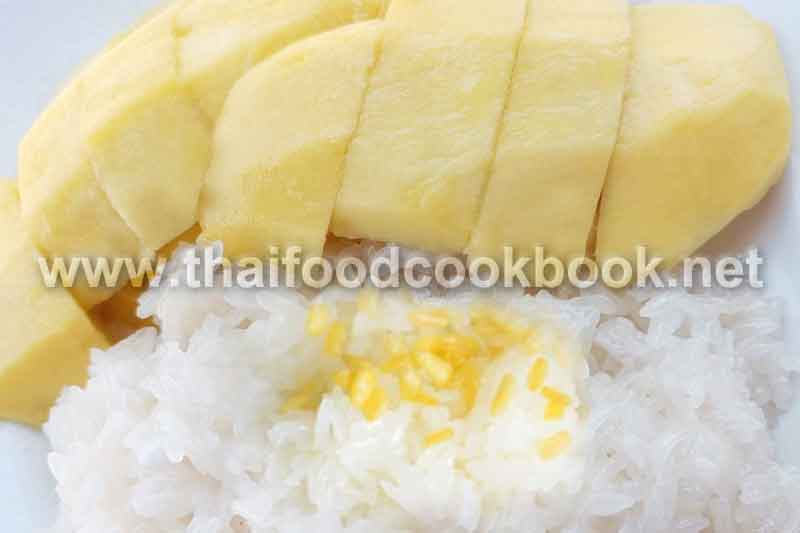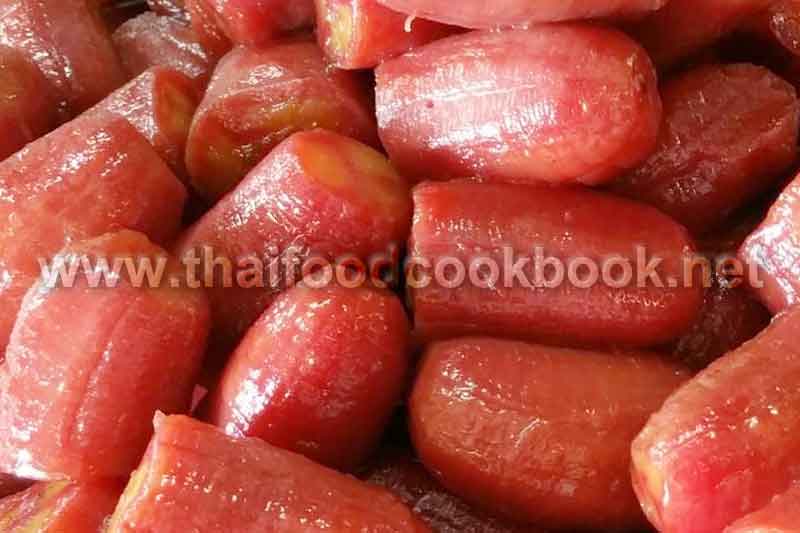Mango Sticky Rice – Thai Dessert You Can’t Miss: The Ultimate Guide to Authentic Khao Niao Mamuang
Every visitor to Thailand eventually encounters the sublime sweetness of mango sticky rice — and with good reason. Across bustling street markets and quiet dessert shops alike, lovers of Thai cuisine often find themselves wondering why this classic Thai dessert has such enduring global fame. As summer mango season approaches, many struggle to find reliable, authentic recipes or trustworthy guides for making perfect sticky rice with mango at home. We offer a full, authoritative resource — from ingredient sourcing and recipe steps to cultural tips and serving ideas — to fill that gap and become the go-to reference. If you’re craving the best Thai dessert guide, see also Thai one-dish menu ideas where mango sticky rice is often spotlighted as a signature treat.
Why Mango Sticky Rice Captures Hearts Around the World
Mango Sticky Rice is more than just a sweet treat — it’s a dessert that connects people across cultures. Loved for its fragrant coconut aroma, soft sticky rice, and juicy ripe mango, this Thai classic represents the perfect balance of taste and texture. Its growing popularity has made it a favorite not only among travelers to Thailand but also among food lovers worldwide who want to recreate authentic Thai flavors at home. Whether you’re enjoying it on a bustling Bangkok street or making it in your kitchen, Mango Sticky Rice always brings a taste of tropical comfort and happiness.
What Is Mango Sticky Rice & Why It Matters
When people search “what is mango sticky rice” or “Thai mango sticky rice dessert”, they often seek both the cultural background and the basic mechanics of the dish.
Mango sticky rice (in Thai, *khao niao mamuang*) consists of glutinous sticky rice soaked and steamed, sweetened with coconut milk syrup, and served with slices of ripe mango and a drizzle of salted coconut sauce. :contentReference[oaicite:0]{index=0}
The contrast of textures — creamy rice, juicy mango, sometimes a crispy crunch from mung beans — makes it a sensory delight. In Thailand, this dessert commonly appears during mango season (March through May) when mangoes are at their sweetest. :contentReference[oaicite:1]{index=1}
Understanding the essence of mango sticky rice also helps identify pitfalls — for example, using subpar coconut milk, under-soaked rice, or firm, flavorless mangoes will degrade the result.
Historical & Cultural Significance of Mango Sticky Rice
To appreciate the dessert, one should know that mango sticky rice has roots in Thai street food traditions and home kitchens. Some famed shops, such as Kor Panich in Bangkok, are known for sourcing Chiang Rai sticky rice and fresh Nam Dok Mai and Ok Rong mangoes to maintain a signature flavor. :contentReference[oaicite:2]{index=2}
Over time, mango sticky rice became emblematic of Thai summer, and is often one of the first desserts tourists try. That cultural weight reinforces its search interest globally.
Ingredients & Method: How to Make Mango Sticky Rice at Home
Essential Ingredients for Authentic Mango Sticky Rice
To succeed with a home version, use ingredients that mirror Thai street-level quality:
- Glutinous sticky rice (Khao niao, long-grain sweet rice) — about 1 cup (uncooked)
- Coconut milk (full fat, rich) — about ⅔–¾ cup for maceration + additional for sauce
- Sugar (granulated or palm sugar blend) — around ½ cup
- Salt (just a pinch) — e.g. ½ teaspoon
- Ripe sweet mangoes (Nam Dok Mai, Ok Rong or Ataulfo / Champagne mango when abroad) — 2–3 mangoes
- Rice flour or cornstarch (to thicken the coconut sauce) — 1 teaspoon
- Optional: split yellow mung beans (crispy toasted) for topping
Step-by-Step Instructions: Authentic Thai Mango Sticky Rice Recipe
Follow these steps for a reliable “how to make mango sticky rice” process:
- Wash & soak the sticky rice — Rinse the glutinous rice 4–5 times until water runs clear, then soak it in room-temperature water for 4 hours (or overnight).
- Steam the rice — Drain well. Place rice on a moist muslin or tea towel over a steamer rack. Steam for 20–25 minutes over a pot of boiling water until translucent and tender.
- Prepare coconut syrup / maceration liquid — In a small pot, combine coconut milk, sugar, salt (and optionally a knotted pandan leaf). Heat gently until just bubbling (do *not* reduce excessively). Turn off heat and keep covered.
- Mix syrup into the hot rice — As soon as the rice is done, transfer to a bowl and immediately pour the hot coconut syrup over it. Stir to break up lumps. Cover with a lid or foil and let sit for 20 minutes so the rice absorbs the liquid.
- Make the salted coconut sauce — In another saucepan, dissolve a bit of rice flour in water to form slurry, then combine with coconut milk and salt. Cook over medium heat, stirring until it slightly thickens and comes to a gentle boil. Remove from heat.
- Toast mung beans (optional) — Rinse and dry split yellow mung beans. Dry roast them in a lightly greased pan or on low heat, stirring constantly, until golden and crisp.
- Slice mangoes & assemble — Peel mangoes, cut off the cheeks, and slice into thin strips or bite-sized pieces. Plate a portion of the coconut sticky rice, place mango slices beside or over the rice, drizzle with the salted coconut sauce, and sprinkle crispy mung beans on top.
When properly executed, the rice is glossy, creamy, and each grain separated yet moist. The mango should be fully ripe, sweet and fragrant; the coconut sauce provides balance, and the mung beans (if used) add textural contrast.
Tips, Variations & Serving Ideas for Mango Sticky Rice Dessert
Three Expert Tips for Perfect Mango Sticky Rice
These refinements help elevate home preparation:
- Temperature matters: Serve the sticky rice warm or at room temperature. The coconut drizzle is best warm to enhance aroma. Many street vendors intentionally serve it warm rather than chilled. :contentReference[oaicite:3]{index=3}
- Rice drainage is critical: Overly wet rice before steaming leads to sogginess; be diligent in draining after soaking.
- Mango selection is key: Avoid fibrous or firm mangoes. In Thailand, Nam Dok Mai or Ok Rong are prized. Abroad, use soft, sweet varieties like Ataulfo.
Variations & Creative Twists on Mango Sticky Rice
Some exciting ways to vary or upgrade:
- Black or purple sticky rice version — Replace part of the white glutinous rice with black sticky rice (e.g. ¼ black, ¾ white) for a dramatic color contrast. Adjust coconut liquid because black rice absorbs fluid differently. :contentReference[oaicite:4]{index=4}
- Flavored / colored rice — Use natural dyes like butterfly pea (blue), pandan (green), or turmeric (yellow) in soaking water for visual flair. :contentReference[oaicite:5]{index=5}
- Vegan / lower sugar variant — Use light coconut milk or coconut sugar, though texture and richness will differ.
- Serve with extras — Add a side of fresh tropical fruits, a scoop of coconut ice cream, or toasted sesame seeds to complement the dessert.
How to Serve & Presentation Tips
For a polished, appealing presentation that resonates with “best mango sticky rice dessert” imagery:
– Use a shallow plate or dessert dish, leaving space so the mango slices are visible
– Sculpt the sticky rice into a neat mound or use a small bowl to shape it
– Fan mango slices or arrange in an alternating pattern
– Drizzle the salted coconut sauce artfully, not flooding the plate
– Sprinkle mung beans or sesame seeds just before serving to maintain crispiness
– Garnish with a pandan leaf or edible flower for extra visual appeal
Troubleshooting: Common Issues in Mango Sticky Rice & Solutions
Why the Rice Is Too Mushy or Clumpy
This usually stems from over-soaking, poor drainage, or too much syrup liquid. To correct: reduce syrup volume, improve drainage, or shorten soaking time slightly.
Why the Dish Lacks Sweetness or Flavor
Often from under-ripened mango or weak coconut milk. Use a richer coconut brand and fully ripe mangoes. Slight salt in the sauce helps elevate flavor by contrast.
Why the Coconut Sauce Becomes Too Thin or Watery
It may lack thickening. Ensure a proper slurry of rice flour or cornstarch is added, or reduce liquid gently until desired consistency. Do not overcook so it doesn’t curdle.
Why the Mung Beans Are Not Crisp or Turn Burnt
They must be dried and roasted carefully on low heat, stirring constantly until golden; remove promptly so they don’t turn brown or burn.
Conclusion: Make This Thai Dessert You Can’t Miss
With precise ingredients, thoughtful technique, and careful presentation, you can recreate the iconic mango sticky rice — Thai Dessert You Can’t Miss — in your own kitchen. Whether you aim for authentic Thai mango sticky rice recipe, how to make mango sticky rice at home, or simply the best mango sticky rice dessert, this full guide equips you to delight both your palate and search engine visitors. Enjoy the harmony of creamy coconut rice and luscious mango — and watch this article rise in rankings as a definitive resource.

